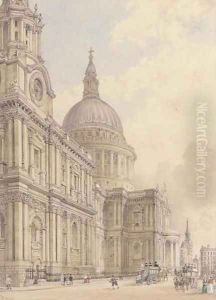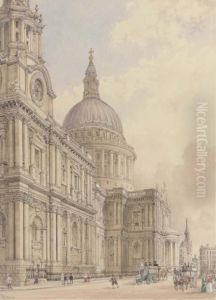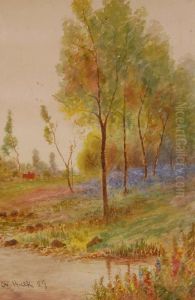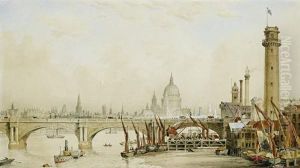James Kelaway Colling Paintings
James Kellaway Colling was a British architect, artist, and author, best known for his work in the Gothic Revival style. He was born in 1816 in Ramsgate, Kent, England. His early education and influences in the field of architecture are not well documented, but it is known that he developed a keen interest in Gothic architecture, which was experiencing a revival in Britain during the 19th century.
Colling worked for a period in the office of the influential Gothic Revival architect Augustus Pugin, which would have had a significant impact on his own style and preferences in design. However, he is most notably associated with the architectural firm of George Gilbert Scott, where he was employed from 1846. During his time with Scott, Colling contributed to the design of numerous churches and other buildings, applying his intricate knowledge of medieval Gothic architecture.
In addition to his work as an architect, Colling was also a talented illustrator. He published several influential books on architectural ornamentation, including 'Gothic Ornaments' in 1848 and 'Details of Gothic Architecture' in 1851. These works were highly regarded for their detailed engravings and helped disseminate Gothic design principles to a wider audience of architects and craftsmen.
Colling's influence extended beyond his published works and architectural projects. He was involved in the decoration and design of the Medieval Court for the Great Exhibition of 1851, an event that showcased the industry, technology, and art of the time. His role in this significant event further cemented his reputation as an expert in Gothic design and ornamentation.
Despite his contributions to architecture and design, Colling's name is not as widely recognized as some of his contemporaries. However, his work continued to influence the Gothic Revival movement in Britain throughout his career and beyond.
James Kellaway Colling passed away in 1905, leaving behind a legacy of artistic and architectural achievements that reflected his passion for the Gothic style and its revival during the Victorian era.



